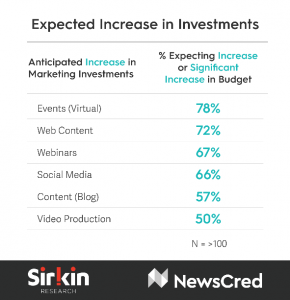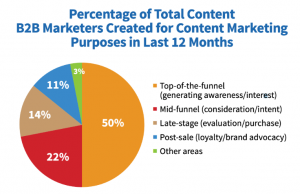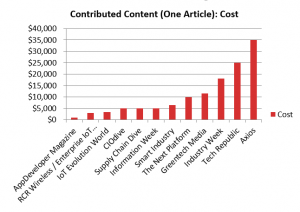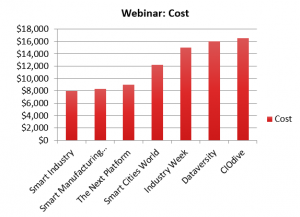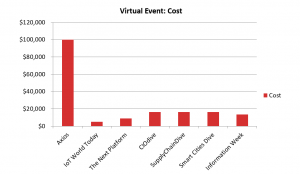With the onset of COVID-19, marketing teams have had to completely recalculate their strategy to adjust to new (likely reduced) budgets, a smaller field of viable leads and new customer priorities. As the world slowly adjusts to a ‘new normal’, however, clear trends are emerging on what strategies are proving most effective and where marketing budgets are being spent.
Marketers are Still Investing in Key Areas
Many marketers have been asked to re-prioritize spend, as a recent survey conducted in April 2020 by Sirkin Research shows. Several areas in marketing have benefited from an increase in budget – particularly virtual events and content. As highlighted in our recent blog post on virtual events, these two categories can be planned to strategically complement each other, thereby maximizing marketing investments.
When increasing budget for content, however, there’s more pressure to ensure it’s valuable to prospects. For example, educational content, like how-to guides, eBooks, case studies, or blogs and newsletters, that offer tips can be extremely useful to potential customers. But, before building out a full content calendar, make sure to conduct a digital audit of relevant buyer personas to identify topics and terms that are most likely to engage and gain value from your content.
There is More to a Great Marketing Meal than Just TOFU
According to the Content Marking Institute’s 2020 B2B Benchmarks, Budgets, and Trends report released last October, nearly 50% of all content created by B2B marketers last year was targeted towards people at the beginning of the buyer’s journey at the “top of the funnel.”
Now is an excellent time to re-think content strategy and audit pieces meant for each stage in the funnel. By expanding the scope of content to include detailed customer case studies or reviews, marketing teams can address the needs of prospects at every stage of the sales process, including the end of the funnel.
A revamped content strategy can also serve current customers, as well as expand the variety of posts on your website. Having material directed to existing customers can increase retention and engage them in user-generated content (UGC) opportunities – which is considered the most effective content in persuading prospects to consider products and services.
Building an Angle Around COVID-19? Tread Carefully with Media
It is hard not to find news somehow related to the pandemic, but for businesses looking to build a story around COVID-19, just remember, the bar is high. In a recent panel discussion hosted by the Public Relations Society of America, a few journalists had some very pointed feedback.
“It’s changed the way we virtually look at any kind of story,” said Anthony Ha of TechCrunch. “For a lot of PR people, a big part of their job is pitching their clients as subject matter and thought leaders — I would encourage them to try and apply a higher bar for anything COVID-related. There’s a thin line between being helpful and trying to hitch a line to this global tragedy; no one is an expert in COVID.”
Work with the communications team to ensure that any possible media angle is a viable narrative and fits with a journalist’s coverage area. Most of all, make sure that the spokesperson is an expert on this topic. Also, consider the full range of stories and mediums available: many local news stations are highlighting “good news” stories in addition to their regular coverage.
New Updates on Paid Opportunities
Exploring paid media opportunities can be valuable and cost-effective when thinking about shifts in marketing spend. Here’s updated charts covering costs for paid content placement, webinars and virtual events:
Recent research from Gartner Group suggests that virtual events:
- attract more women than physical events
- convert form fills to MQLs 2.8 times faster because they eliminate the cost constraints and time associated with travel
Though virtual events are less ideal for organic networking than in-person events, well-executed online events can reach a wider audience. Especially given that many people are home looking for new ways to engage with their professional communities and don’t need to travel to attend virtual events. The Gartner research is early proof that shows the potential for virtual events.
Overplayed as the phrase may be, the US is slowly coming to embrace a new normal as COVID-19 cases are reduced and areas carefully reopen. Marketing teams can adapt and even thrive in the new economy by investing in high-value areas like content and virtual events.
Don’t forget to subscribe to our newsletter to get our content and other updates straight to your email!

